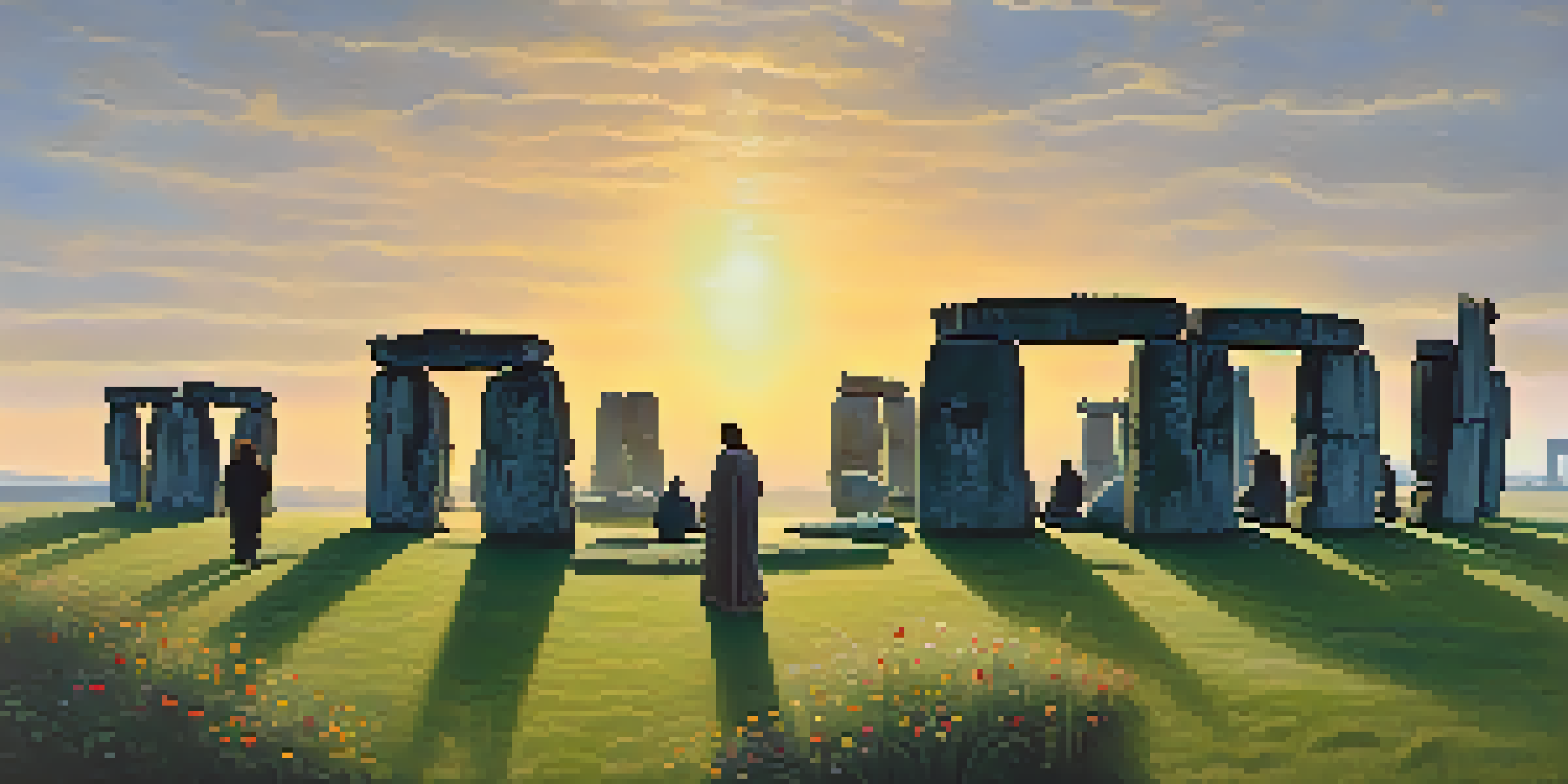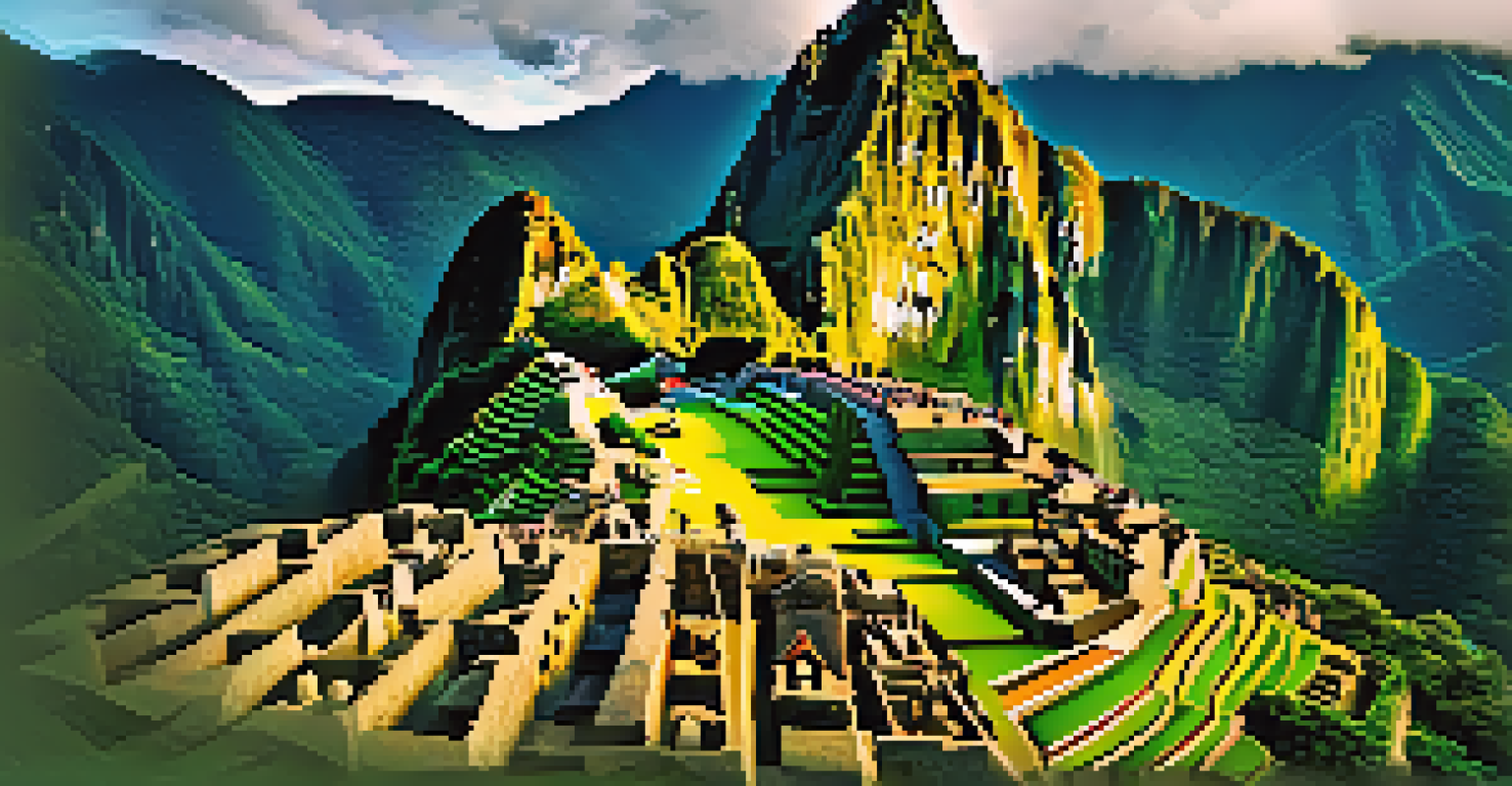Exploring the Spiritual Significance of Ancient Sacred Sites

Understanding Sacred Sites and Their Spiritual Role
Ancient sacred sites are locations that hold significant spiritual meaning for various cultures. These sites often serve as places of worship, pilgrimage, or meditation, connecting people to their beliefs and traditions. For example, Stonehenge in England is not just a remarkable structure; it’s a site steeped in mystery and spiritual significance, believed to align with celestial events.
The journey to the sacred is the journey to the self.
These locations are often chosen for their natural beauty or unique geographical features, such as mountains or rivers, which are thought to possess spiritual energy. Many cultures believe that these energies can enhance spiritual experiences, making them ideal for rituals and ceremonies. The connection between nature and spirituality is strong in many ancient belief systems.
Visiting these sacred sites can evoke profound emotions and a sense of connection to something greater than oneself. Whether it's the tranquility of a temple or the awe of a sacred mountain, these places invite reflection and introspection, allowing individuals to explore their own beliefs and spirituality.
The Role of Rituals at Sacred Sites
Rituals play a crucial part in the spiritual significance of ancient sacred sites. These practices, which can range from simple prayers to elaborate ceremonies, help individuals and communities connect with the divine. For instance, the rituals performed at Machu Picchu in Peru reflect the Incan belief in the interconnection of nature and spirituality.

Many rituals are designed to honor ancestors, deities, or natural elements, reinforcing the cultural heritage of the people who practice them. They often incorporate music, dance, and offerings, creating a vibrant atmosphere rich with meaning. This not only strengthens community bonds but also preserves traditions for future generations.
Sacred Sites Enhance Spirituality
Ancient sacred sites serve as powerful locations for worship, meditation, and connection to deeper beliefs.
Participating in such rituals can be a transformative experience, allowing individuals to feel a part of something larger than themselves. This connection fosters a sense of belonging and continuity, emphasizing the importance of these ancient sites in maintaining cultural identity.
Sacred Sites as Centers of Healing
Many ancient sacred sites are considered places of healing, both physically and spiritually. People often visit these sites seeking solace, guidance, or a deeper understanding of their life's journey. For example, the hot springs at Bath in England have been used for centuries for their supposed healing properties, attracting visitors in search of rejuvenation.
The earth has music for those who listen.
The belief in the healing power of sacred sites is rooted in the idea that these locations hold unique energies. Some cultures believe that the natural elements found at these sites, such as minerals or specific plants, can aid in physical and emotional healing. This connection between health and spirituality is a common thread in many ancient traditions.
Visiting a sacred site for healing can be a deeply personal experience. It offers individuals a chance to reflect on their struggles and find peace, often leading to a newfound sense of clarity and purpose.
Cultural Preservation Through Sacred Sites
Ancient sacred sites are vital for preserving cultural heritage and identity. They serve as living museums, showcasing the beliefs, practices, and histories of various civilizations. For example, the pyramids of Egypt are not just architectural wonders; they embody the spiritual and cultural achievements of an entire civilization.
These sites often attract visitors from around the world, fostering an appreciation for diverse cultures and traditions. By sharing their stories and significance, sacred sites help keep the history of these cultures alive. This cultural exchange promotes understanding and respect among different communities.
Rituals Foster Community Bonds
Engaging in rituals at sacred sites helps strengthen cultural heritage and fosters a sense of belonging among participants.
Moreover, the preservation of these sites is crucial for future generations. Efforts to maintain and protect sacred sites ensure that their spiritual significance continues to inspire and educate, allowing people to connect with their roots.
The Influence of Nature on Sacred Sites
Nature plays a pivotal role in the spiritual significance of ancient sacred sites. Many of these locations are chosen for their breathtaking landscapes and unique geological features, which are believed to enhance spiritual experiences. For instance, the serene beauty of Uluru in Australia draws visitors seeking to connect with its spiritual essence.
The elements of nature—such as mountains, rivers, and forests—are often viewed as sacred in many cultures. They are seen as manifestations of the divine, providing a backdrop for worship and reflection. This deep connection between nature and spirituality highlights the importance of preserving these environments.
By immersing ourselves in nature at these sacred sites, we can experience a sense of peace and connection. This not only enhances our spiritual journey but also reinforces the belief that nature and spirituality are intrinsically linked.
Modern Interpretations of Ancient Sacred Sites
In today's world, ancient sacred sites are often reinterpreted through a modern lens. People from various backgrounds visit these locations, seeking a deeper understanding of spirituality beyond traditional beliefs. This blending of perspectives can create a rich tapestry of experiences, as seen in the popularity of yoga retreats at ancient temples.
Modern interpretations often emphasize personal spirituality, allowing individuals to connect with these sites in unique ways. This might include meditation, mindfulness practices, or even artistic expressions inspired by the sacred space. Such activities can enhance the spiritual significance of these locations for contemporary visitors.
Healing Power of Sacred Locations
Many sacred sites are believed to possess unique energies that aid in physical and emotional healing for visitors.
However, it's essential to approach these sites with respect and awareness of their cultural significance. Engaging with ancient sacred sites in a thoughtful manner can lead to a greater appreciation for their history and importance, fostering a sense of responsibility in preserving them for future generations.
The Global Impact of Sacred Sites
Sacred sites have a profound impact on a global scale, influencing spirituality, tourism, and cultural exchange. As destinations for pilgrimage and spiritual exploration, they attract millions of visitors each year. This influx creates economic opportunities for local communities while also fostering intercultural dialogue.
The global interest in sacred sites encourages a deeper understanding of different belief systems and practices. It promotes respect for diversity and highlights common themes in human spirituality, such as the search for meaning and connection. This shared quest can bridge cultural divides and foster unity.

Moreover, the preservation of sacred sites is a collective responsibility. As we recognize their global significance, we must also advocate for their protection, ensuring that future generations can experience their spiritual richness and cultural heritage.